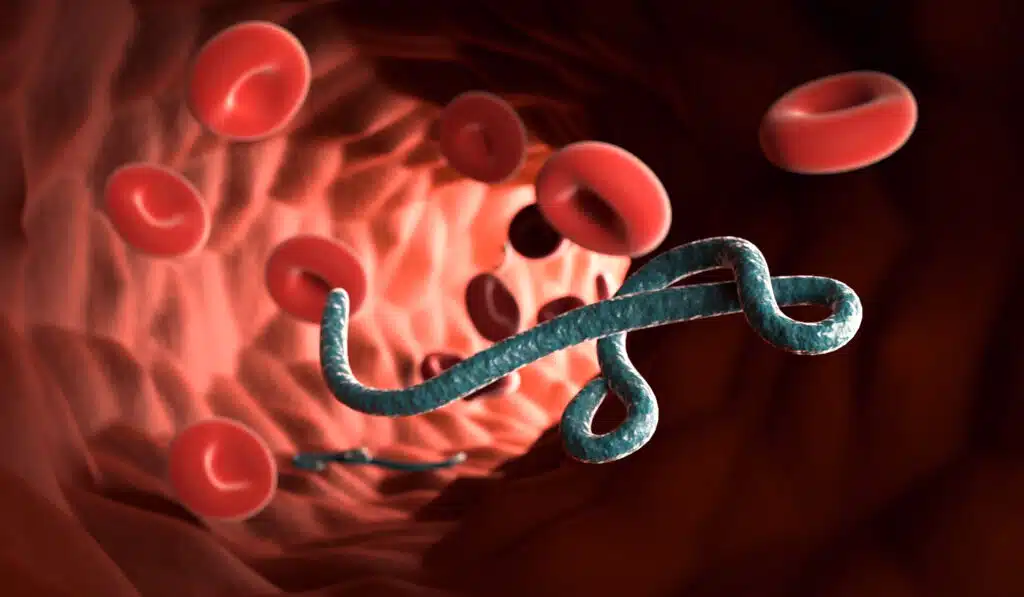World Most Deadly Viruses in History
Humans have been battling most deadly viruses in history for as long as we’ve existed. Over time, we’ve developed vaccines and antiviral drugs that have either stopped these viruses from spreading widely or helped people recover from them.
In fact, we’ve even succeeded in wiping out one disease completely – smallpox.
However, not all viruses are created equal. Some are far deadlier than others. Take the Ebola virus, for example. The strain responsible for the 2014-2016 outbreak in West Africa had a staggering fatality rate, killing up to 90% of those it infected.
While other viruses, like the novel coronavirus that’s currently causing global outbreaks, may have lower fatality rates, they’re still a significant public health concern due to their ability to infect vast numbers of people.
The World Health Organization (WHO) has highlighted some of the most dangerous viruses based on their fatality rates, the number of deaths they’ve caused, and the potential threat they pose. Among these is the Marburg virus, which was first identified in 1967.
The virus shares similarities with Ebola, as both can cause a condition known as hemorrhagic fever. This leads to high fevers and internal bleeding, which can result in shock, organ failure, and ultimately, death.
Regarding most deadly viruses in history, the fatality rate for the Marburg virus has varied over the years. The first outbreak in 1967 had a fatality rate of 24%. However, subsequent outbreaks have been even more deadly, with rates reaching 83% between 1998 and 2000 in the Democratic Republic of Congo, and a horrifying 100% during an outbreak in Uganda in 2017, according to the WHO.
Recently, in August 2021, the first Marburg virus outbreak in West Africa was confirmed. The case involved a man from southwestern Guinea who showed symptoms like fever, headache, fatigue, abdominal pain, and bleeding from the gums before succumbing to the disease.
Despite the outbreak lasting for six weeks and having 170 high-risk contacts, only one additional case was confirmed, according to Reuters.
Understanding Dangerous Viruses: What You Should Know
Marburg Virus
The Marburg virus is one of the scariest viruses out there. Even though it’s named after a peaceful town by a river, it’s not peaceful at all. It’s a type of hemorrhagic fever virus, similar to Ebola.
This means it can make people very sick, causing seizures and bleeding from different parts of the body like the mouth, skin, and organs. Sadly, it’s really deadly, with 9 out of 10 people who get it not surviving.
Ebola
Ebola is another dangerous virus, and there are five different types of it. They are named after places in Africa, like Zaire and Sudan.
The Zaire Ebola is the worst one, with 9 out of 10 people dying from it. Right now, this type is spreading in countries like Guinea, Sierra Leone, and Liberia. Scientists think it might have come from flying foxes, which are a kind of bat, bringing the virus into cities.
Hantavirus:
The Hantavirus is a group of viruses that can make people really sick. It got its name from a river where soldiers in the Korean War got sick back in 1950. If you catch it, you might have problems with your lungs, get a fever, or even have issues with your kidneys.
Rabies: A Deadly Threat That Continues to Linger
Rabies, a disease that can be both terrifying and deadly, has been largely controlled in the developed world since the introduction of pet vaccines in the 1920s. However, in places like India and parts of Africa, rabies remains a grave concern. According to a 2019 study published in the CDC’s Morbidity and Mortality Weekly Report, around 59,000 people lose their lives to rabies each year.
The rabies virus spreads through the bite or scratch of an infected mammal, such as a dog or a bat. Once the virus enters the body, it quickly travels to the brain and nervous system. It’s crucial for anyone bitten by a potentially rabid animal to seek immediate medical attention for rabies vaccines or antibody treatments.
Without these interventions, the virus wreaks havoc on the brain and nerves. Once symptoms of rabies start to appear, the outlook is grim; the disease has a staggering 99% fatality rate, as reported by the CDC.
Dr. Muhlberger, an expert in infectious diseases, emphasized the severity of rabies, stating, “It destroys the brain; it’s a really, really bad disease.” Thankfully, we do have effective tools to combat rabies. “We have a vaccine against rabies, and we have antibodies that work against rabies, so if someone gets bitten by a rabid animal, we can treat this person,” she explained.
YOU MAY LIKE: How To Care For Your Prostate
However, Dr. Muhlberger also stressed the importance of timely treatment, warning, “if you don’t get treatment, there’s a 100% possibility you will die.”
Bird Flu Virus
Bird flu is another virus that worries a lot of people. While it’s true that it can be really deadly, with a 70% chance of dying if you get it, the risk of catching it is pretty low.
Most people who get the H5N1 strain, which is the most famous type, got it from being around chickens. That’s why most cases happen in places like Asia, where people often live near chickens.
Lassa Virus
The Lassa virus was first found in Nigeria when a nurse got sick from it. This virus comes from rodents, like rats. It’s mainly found in specific areas, especially in western Africa. There, about 15% of rodents might be carrying the virus.
This means the virus can pop up again at any time in those areas, making it a constant concern for the people who live there.
Junin Virus
The Junin virus causes a disease called Argentine hemorrhagic fever. People who catch this virus can have some serious problems like swelling of tissues, sepsis (which is a severe infection), and bleeding from their skin. The tricky part is, the symptoms can seem like something else, like the flu, so it’s not always easy to spot the disease right away.
Crimea-Congo Fever
This fever gets its name from where it was first found, but it doesn’t stay there. It’s spread by ticks and acts a lot like the Ebola and Marburg viruses. In the beginning, people might notice tiny bleeding spots on their face, mouth, and throat.
Machupo Virus
The Machupo virus causes a sickness called Bolivian hemorrhagic fever, or black typhus. It’s a lot like the Junin virus, with high fevers and heavy bleeding. What’s even scarier is that people can pass this virus to each other, and it’s often carried by rodents.
Kyasanur Forest Virus (KFD)
As one of the most deadly viruses in history, the Kyasanur Forest Virus, or KFD, was found in the woods along the southwest coast of India back in 1955. It’s also spread by ticks, but it’s tough for scientists to figure out which animals might carry it.
They think rats, birds, and wild pigs might be some of the hosts. If someone gets infected, they can have a high fever, really bad headaches, muscle pain, and sometimes bleeding.
Dengue Fever Dengue fever is a big worry, especially if you’re planning a vacation in tropical places. Mosquitoes spread this virus, and it’s a big problem in spots like Thailand and India where many people go on holiday. Every year, between 50 to 100 million people get dengue.
But it’s not just a vacation problem; about 2 billion people who live in areas where dengue is common have to watch out for it all the time.

HIV: A Persistent Threat with Global Impact
In today’s world, one virus stands out as particularly deadly: HIV. Dr. Amesh Adalja, an infectious disease physician and spokesperson for the Infectious Disease Society of America, emphasized the ongoing toll of HIV on human lives, telling Live Science, “It is still the one that is the biggest killer.”
Since its identification in the early 1980s, an estimated 32 million people have lost their lives to HIV. Adalja further highlighted, “The infectious disease that takes the biggest toll on mankind right now is HIV.”
Despite the devastating impact of HIV, medical advancements have provided some hope. Powerful antiviral drugs have transformed HIV from a certain death sentence to a manageable chronic condition, allowing many people to live for years with the virus.
In rare cases, groundbreaking treatments like stem cell transplants have even led to cures. However, the battle against HIV is far from over, especially in low- and middle-income countries where 95% of new HIV infections occur.
According to the World Health Organization (WHO), the African region faces a particularly high burden of HIV. Nearly 1 in every 25 adults in the WHO Africa region is HIV-positive, accounting for over two-thirds of people living with HIV worldwide.
The global impact of HIV remains substantial, with 650,000 HIV-related deaths recorded in 2021 alone. Despite progress in treatment and prevention, HIV continues to be a pressing global health challenge that requires ongoing attention and resources.
Understanding MERS: A Deadly Virus with Limited Spread
Middle East respiratory syndrome, commonly known as MERS, first emerged in Saudi Arabia in 2012 and later caused a significant outbreak in South Korea in 2015. While MERS has a high case fatality rate, claiming the lives of about 35% of those infected, its overall impact has been relatively limited.
As of 2021, the virus has resulted in the deaths of 858 people worldwide. One of the reasons for its limited spread is that MERS does not easily transmit from person to person.
Belonging to the same family of viruses as SARS-CoV and SARS-CoV-2, the virus responsible for COVID-19, MERS has its origins in camels. According to the World Health Organization (WHO), the virus initially infects camels before jumping to humans.
In humans, MERS can cause symptoms such as fever, coughing, and shortness of breath. Like its less lethal relatives, SARS and SARS-CoV-2, MERS can progress to severe pneumonia, making it a potentially deadly respiratory illness.
Despite the significant health risks posed by MERS, there is currently no vaccine available to prevent the disease. However, there are preventive measures that individuals can take to reduce the risk of infection.
Regularly washing hands, avoiding contact with camels, and refraining from consuming products made with raw animal milk are some of the recommended precautions to minimize the chances of contracting MERS.
While MERS may not be as widespread as some other viruses, understanding its transmission and prevention is crucial for safeguarding public health, particularly in regions where the virus is endemic.
Combatting Rotavirus: A Global Effort to Save Children’s Lives
Rotavirus is a highly contagious diarrheal disease that claims the lives of approximately 200,000 children every year, with the majority of these deaths occurring in Nigeria and India, as reported by PreventRotavirus, a council focused on promoting the widespread use of rotavirus vaccines.
The virus primarily spreads through what researchers refer to as the “fecal-oral route,” meaning that tiny particles of feces containing the virus are inadvertently consumed.
In developed countries where rotavirus vaccines are readily available and healthcare infrastructure is robust, deaths from the disease among children are rare.
However, in many developing nations, the lack of access to rehydration treatments and other essential healthcare services exacerbates the impact of rotavirus, making it a significant killer.
The World Health Organization (WHO) highlights the staggering global burden of rotavirus, estimating that each year, the virus leads to over 25 million outpatient visits and two million hospitalizations worldwide. Fortunately, the introduction of rotavirus vaccines has proven to be a game-changer in the fight against this deadly disease.
Countries that have incorporated the vaccine into their immunization programs have reported dramatic reductions in both rotavirus-related hospitalizations and deaths.
Currently, there are two vaccines available that offer protection against rotavirus, which is the leading cause of severe diarrheal illness in babies and young children.
These vaccines represent a critical tool in reducing the global impact of rotavirus, particularly in regions where the disease poses the greatest threat to children’s health. Through continued efforts to expand vaccine coverage and improve access to healthcare services, we can further reduce the devastating toll of rotavirus on children’s lives worldwide.
SEE ALSO: Lack Of White Blood Cells
Conclusion on most deadly viruses in history
Summarily, determining the most deadly viruses in history is challenging as it depends on various factors such as mortality rate, transmission dynamics, and historical context. However, several viruses have had significant impacts on human health and have caused widespread morbidity and mortality. Some of the deadliest viruses in history include:
Smallpox: Smallpox is often considered one of the most deadly viruses in history ever. It caused millions of deaths throughout history before being eradicated in 1980 through a global vaccination campaign.
HIV/AIDS: Human immunodeficiency virus (HIV) causes acquired immunodeficiency syndrome (AIDS), which has led to millions of deaths worldwide since the epidemic began in the early 1980s.
Influenza: Influenza viruses have caused several pandemics throughout history, including the 1918 Spanish flu pandemic, which resulted in tens of millions of deaths worldwide.
Ebola virus: Ebola virus disease (EVD) outbreaks in Africa have resulted in high mortality rates, with some outbreaks reaching case fatality rates of over 90%.
SARS-CoV-2 (COVID-19): The COVID-19 pandemic, caused by the novel coronavirus SARS-CoV-2, has led to millions of deaths worldwide since its emergence in late 2019.
Malaria: While not caused by a virus, malaria is a mosquito-borne parasitic disease that has historically caused significant mortality, particularly in tropical and subtropical regions.
Yellow fever virus: Yellow fever outbreaks have occurred throughout history, causing significant morbidity and mortality, particularly in Africa and South America.
Rotavirus: Rotavirus is a leading cause of severe diarrheal disease in young children worldwide and is responsible for hundreds of thousands of deaths annually, primarily in developing countries.
While these viruses have had significant impacts on human health, advancements in medical research, vaccination, and public health measures have helped to mitigate their effects. Ongoing efforts to prevent, treat, and control these diseases are essential in reducing their global burden.

A graduate of Computer Science and Information Management Technology. Diploma – Caregiving, Certificates – Dementia and Diabetes Awareness and Management. A researcher, blogger, songwriter, singer and acoustic guitarist. Born in an environment where natural talents such as healing are imparted at our natural birth. This natural talents of healing is the result of our genetic inheritance and the training from family environment.







